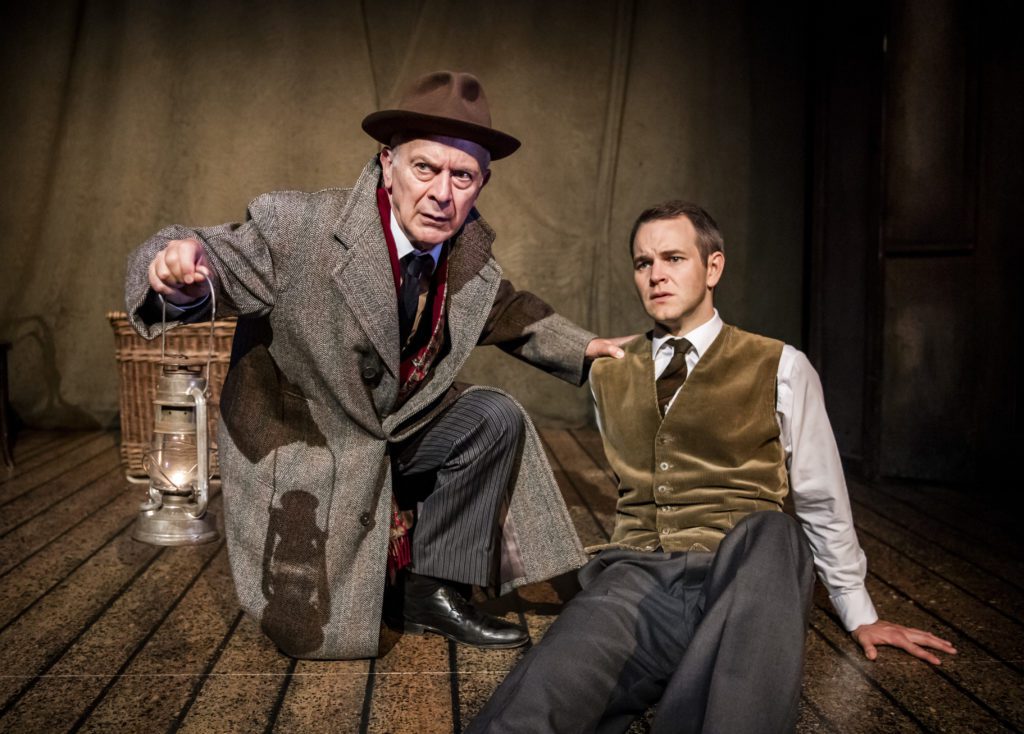Holiday Macabre: ‘The Woman in Black’
By • December 16, 2019 0 933

The holidays may seem an unlikely time to enjoy a Gothic ghost story. Why relish in horror during the season of light?
But there’s something about a bit of the macabre to make us appreciate the coziness of Christmas all the more. That’s what I thought when I left the cold and dank of “The Woman in Black” at the Shakespeare Theatre Company and stepped into the festive vitality of downtown Washington.
At the newly named Michael R. Klein Theatre at the Lansburgh through Dec. 22, this is truly one of the best theater experiences you’ll have this time of year — or any other. Based on the novel of the same name by Susan Hill, this play has been a perennial favorite in the London drama scene. We should consider ourselves lucky that “The Woman in Black” made her way across the pond.
It’s a pretty formulaic ghoulish tale: likable guy is summoned to a haunted house to settle the estate of a deceased client. Boy meets ghost and spends the remainder of the story pursuing her behind locked doors, in misty graveyards and in the darkest recesses of his mind. Pretty standard stuff you read in Edgar Allan Poe.
But there’s something about the specter of the lady in the shadows that stays with you — and has seduced thousands of theatergoers. She even enchanted Harry Potter; Daniel Radcliffe starred in the movie version in 2012.
I was so terrified the night I saw the play that when I returned home I found myself looking for spooks in my closet and under the bed.
This haunting is mostly down to the staging. The deft sound and lighting effects give you glimpses of the lady ghost without a full reveal. Employing Hitchcockian strategies, the play makes your imagination your own worst enemy.
There are no knives, blood or garish displays — just a few screams and expert storytelling and you’re curled up in your seat.
What’s even more astonishing is that this tale is told by only three people, including the title character. Actors Daniel Easton and Robert Goodale take on a number of different personas in the play-within-a-play format, all with equal viability.
The Woman in Black herself remains a silent character, but, in the end, her legend speaks for itself.

